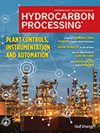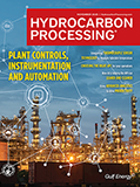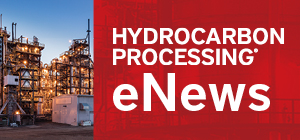Refining
Business Trends: Refinery transactions: A window of opportunity?
In today's rapidly changing energy landscape, refinery transactions have become a focal point of investment discussions.
Digital Feature: The perfect match: How to evaluate chemical resistance and fluid compatibility of materials
Matching the right elastomer to an application is key to ensuring an o-ring's optimal performance and mitigating premature failure.
Argentina fuel firms aim to normalize supply after disruptions
Argentina's oil refiners and producers aim to normalize supplies of motor fuels across the South American country, companies in the sector said on Tuesday, following recent disruptions to gasoline and diesel sales.
Lukoil's Romanian refinery shuts down for planned maintenance works
Romania's Petrotel Lukoil refinery, owned by Russia's Lukoil, will shut for one month from Wednesday for planned maintenance works.
Ukraine says oil refinery hit, power lines damaged in Russian drone attack
A Russian drone attack set ablaze the Kremenchuk oil refinery in central Ukraine and knocked out power supply in three villages, while falling debris from downed drones damaged railway power lines in a nearby region.
Venezuela's main refining complex running at 10% of capacity after two CDUs shutdown
Venezuela's largest refining complex, the 955,000-bpd Paraguana Refining Center, was operating at about 10% of capacity after two CDUs were shutdown due to a fire and lack of feedstock.
China's CNOOC, two chemical firms looking at Shell Singapore assets
CNOOC, Eversun Holdings and Wanhua Chemical are among those that have started early evaluations of Shell assets that include a 237,000 bpd refinery and a one MMtpy ethylene cracker.
Fire at Afipsky oil refinery near Novorossiisk put out
A fire that broke out at the Afipsky oil refinery in Russia's Krasnodar region was promptly extinguished, the region's emergency security authorities said after social media reports of powerful blasts shaking the refinery.
Nigeria's Kaduna refinery to reopen next year, produce 60,000 bpd
Nigeria aims to reopen its Kaduna oil refinery next year, with initial production of 60,000 bpd as part of plans to revive local refineries that have been mothballed for years.
Valero to run its 14 refineries at up to 96.5% capacity in Q4
Valero Energy plans to operate its 14 oil refineries in North America and Britain at up to 96.5% of their combined total throughput capacity of 3.2 million bpd in the fourth quarter.

- UPM unlocks new bio-based markets as Leuna biorefinery produces its first commercial product 12/19
- Stamicarbon awarded technology licensing contract for new urea plant in Eastern China 12/19
- Ford takes $19.5-B writedown on EV business 12/19
- Babcock & Wilcox awarded $40-MM contract for advanced wet gas scrubbing technology at Canadian petroleum refinery 12/19
- Aarti Industries secures methanol and toluene feedstock supply through multiple long-term contracts 12/19
- bp picks first outsider CEO Meg O'Neill after abrupt Auchincloss exit 12/19




